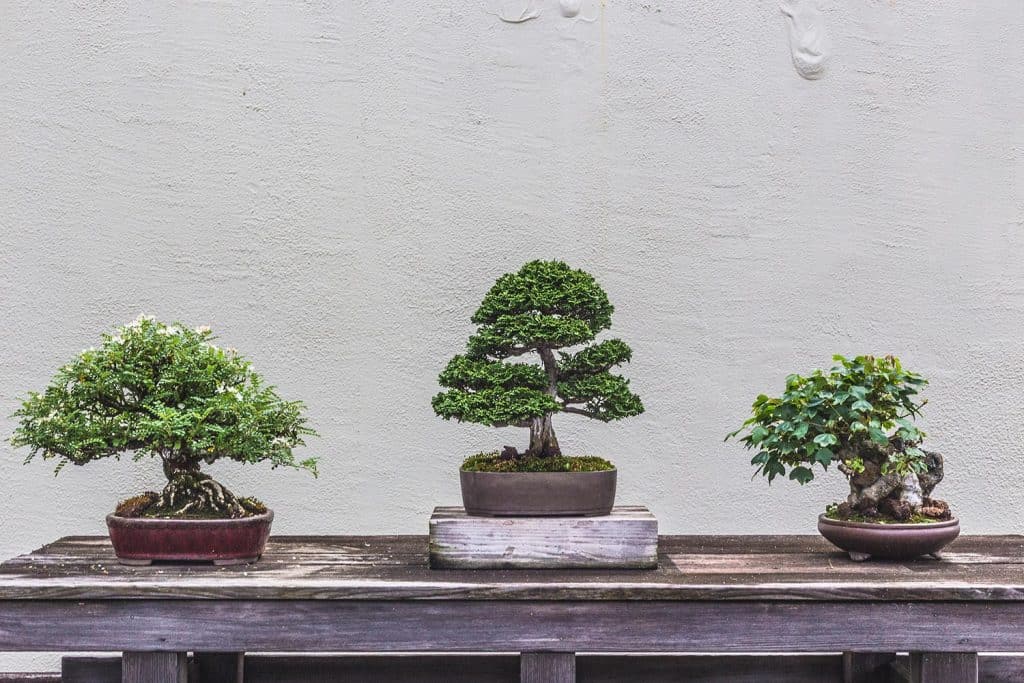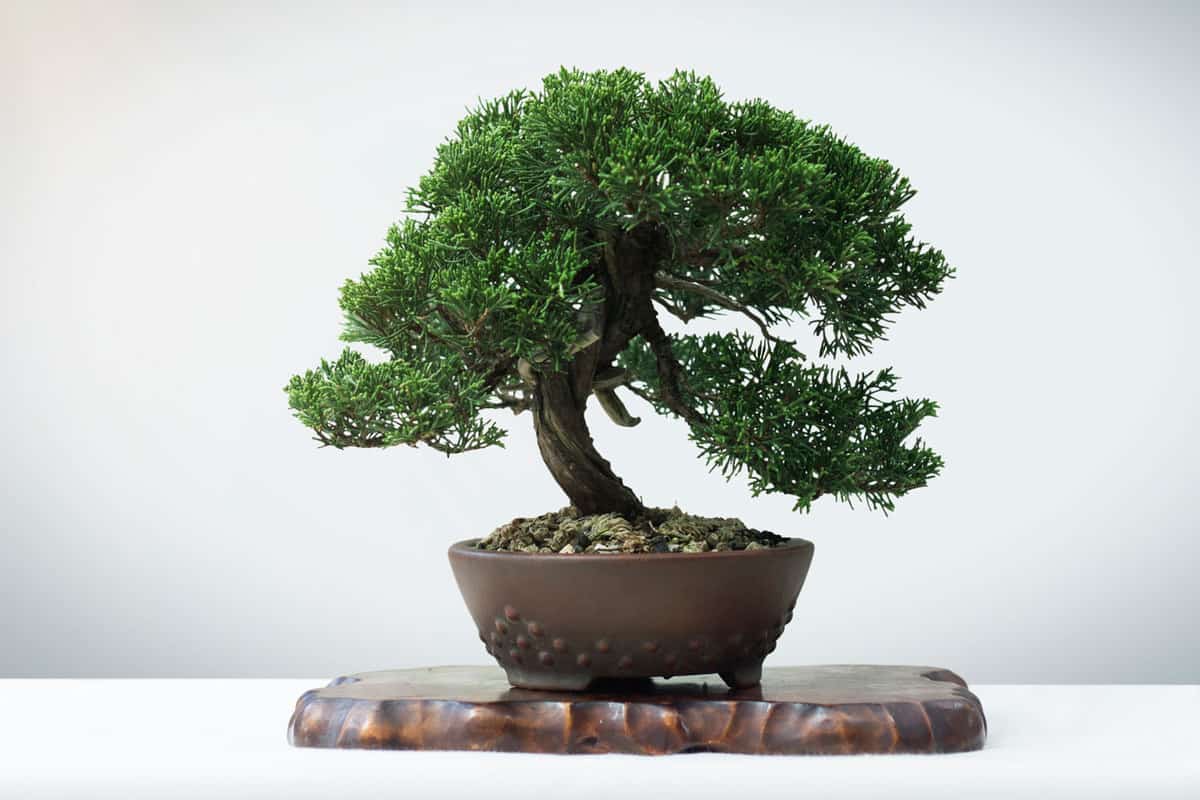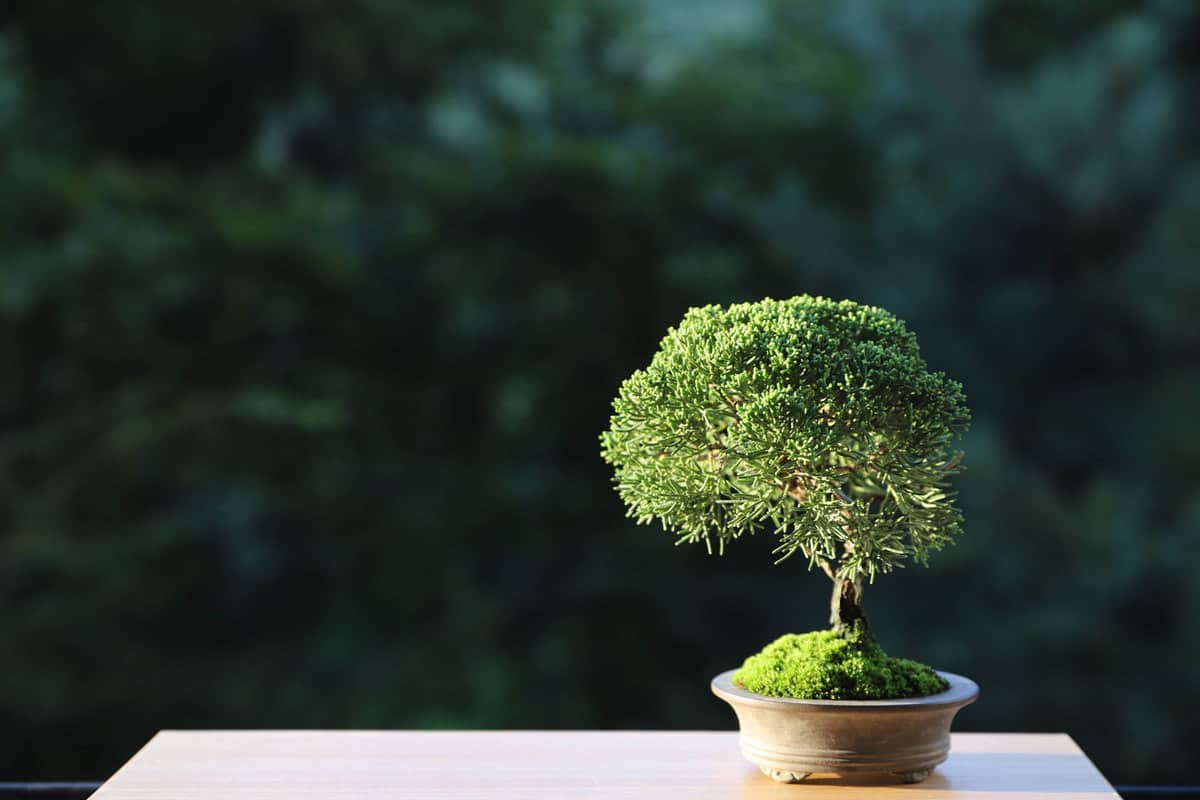For centuries, growing and maintaining bonsai trees has been respected art. However, if you are new to bonsai trees, you may have questions about their average height. We researched different types of bonsai trees, unique attributes, and other helpful information.
Bonsai trees are grouped into different heights and have special names to describe their features. Over time, and depending on the geographical location, various names for Bonsai have been used interchangeably or changed altogether. Most Bonsai fall under a miniature, medium, or large size and include a height range, originally based on how many hands are needed to move the tree.
- Miniature Bonsai - trees of this size can be as small as a 1-inch seedling or as tall as 8 inches.
- Medium Bonsai - trees at this level are between 10 to as many as 36 inches in height.
- Large Bonsai - any trees under this category range between a height of 30 to 80 inches tall.
Learn more about the exciting and ancient Japanese tradition of Bonsai, and common heights for various types of dwarf-sized trees. Keep reading to discover more about distinct types of bonsai, their height, care tips, and why these natural beauties are a wonder to enjoy.
![Very old bonsai tree on a table, How Big Is A Bonsai Tree? [By Type Of Tree]](https://gardentabs.com/wp-content/uploads/2021/10/How-Big-Is-A-Bonsai-Tree.-683x1024.png)
Average Height Of Bonsai Trees
Bonsai trees originated in Japan, but you can transform different types of trees into bonsai trees. Growing a Bonsai tree and caring for this plant style requires patience, dedication, and specific conditions.
If you wish, try growing a Bonsai tree from seed or Misho. Unlike dwarf trees that are genetically manipulated to be a miniature version of a full-grown plant, bonsai trees are managed, pruned, and coaxed into a desired bonsai form.
The classification of bonsai trees is based on whether the tree is a miniature, medium, or large size. However, determining and categorizing Bonsai trees is more of an art than pure science.
Smaller trees can be transferred from their container and allowed to grow into a larger category. Bonsai trees usually exist in trays and small containers and have unique determiners to classify them. Most Bonsai are either miniature, medium, or large.

Miniature Bonsai Trees
Bonsai trees of this size range from as little as 1-inch to as much as 8 inches in height.
Mame
A true Bonsai can be called Mame if it is between 3 to 6 inches tall and is a one-handed Bonsai.
Keishi
The name of this miniature tree translates to thumb size. It is incredibly rare and difficult to maintain for long. It is only a maximum of 1-inch in height.
Kenshitsubo
Note, the term Kenshitsubo is used to describe a Bonsai tree between 1 to 3 inches tall. It is considered a seedling or poppy seed-sized tree and is the smallest height possible for Bonsai. Also, this tree can be called a fingertip Bonsai.
Komono
Also known as a small Bonsai generically, this tree is between 6 and 10 inches high and is a one-handed Bonsai.
Shito
A tree this size is usually grown for show and measures 3 inches in height. Sustaining an incredibly small tree at this height is too difficult long-term, so they are later moved to a larger container to grow more.
Shohin
Most miniature or small Bonsai trees available are Shohin and have a height up to 8 inches tall. Note, this classification is very popular for small Bonsai trees.
Medium Bonsai Trees
Trees that fall between 16 and 36 inches tall are considered medium or two-handed Bonsai trees. They are not too challenging to move, prune, or care for as miniature or large Bonsai trees.
Big or Medium Tree
English speakers, who choose not to use Japanese names for Bonsai classifications, often refer to trees between 16 and 40 inches in height as big or medium.
Chiu or Chumono
Many in the Western world refer to this type of Bonsai as medium. It usually reaches a height of up to 24 inches tall and is considered a two-handed Bonsai.
Katade-Mochi
The following term is used to describe the largest type of Bonsai that can be lifted with one hand. A tree of this type is usually 10 to 18 inches tall.
Kifu Sho
Take home this medium-sized tree that has enough character and interest when pruning and maintaining it. Note, this plant is an average of 16 inches tall.
Dai Or Omono
The term for a Bonsai tree measuring up to 40 inches in height is often used interchangeably. It may be considered a four-handed Bonsai and verging on a large tree classification.
Large Bonsai Trees
Impressive looking Bonsai trees that are much bigger than fingertip or miniature plants are considered large. Trees within this range are taller than three feet and might tower over a smaller adult.
Imperial
One of the most revered forms of Bonsai tree is the Imperial. Also known as eight-handed Bonsai because it takes so many people to handle and move this tree. It is only found in Imperial gardens. These types of Bonsai are considered the most majestic and largest, as they have a height between 60 and 80 inches.
Hachi-Uye
The term Hachi-Uye refers to a six-handed Bonsai, which is often between 40 and 60 inches tall. Note, this type of Bonsai often requires three people to move it.
How Long Does A Bonsai Tree Live?
If a Bonsai is well cared for, it can live well over a century. Some of the oldest Bonsai trees of note are between 500 to 800 years old and live all over the world. The oldest Bonsai tree is most likely a Ficus Bonsai in Parabiago, Italy, and it is over 1,000 years of age!
Do Bonsai Trees Stay Small?
As long as a Bonsai tree is confined to a small pot or container, regularly pruned, and receives adequate water, light, and sits in well-drained soil, it will stay small.
The biggest reason Bonsai are miniature versions of full-grown trees is that their growth is restricted and managed. If a Bonsai were removed from its tray or small container and placed outside or in a large container, it would grow to a normal, full-adult size.
Check out this Bonsai Juniper tree on Amazon.
Do Bonsai Trees Like Small Pots?

A small tray or pot is required to restrict the growth of a Bonsai trees' root systems. As long as a Bonsai can stretch out its roots just enough to soak up nutrition from the soil and water, the plant should stay alive. The art of Bonsai is to create a miniature version of full-size plants and landscapes, so a small container is imperative.
Check out this ceramic Bonsai pot on Amazon.
Why Do Bonsai Trees Grow So Slowly?

A Bonsai stays small because they exist in a confined space that controls growth and height. If a Bonsai were able to live outdoors or in a larger container, the tree would grow a lot faster and larger than a desirable, miniature size. The conditions to create a Bonsai tree naturally make the plant grow at a slow rate.
If a Bonsai is having health issues because of inadequate water, too much light, or fungi, the growth of the tree may become stunted. Avoid overwatering your Bonsai and ensure its container is clean.
The tree does best in well-draining soil. Do your part to keep your tree healthy, happy, and growing strong.
Read more: "My Ikea Bonsai Tree Is Dying – What To Do?"
Check out these Bonsai seed starter kit on Amazon.
How Can You Tell The Age Of A Bonsai Tree?
Usually, you can tell the age of a tree by cutting it and observing the rings inside. However, this method would be disastrous for a Bonsai tree, so you have to find another way to tell its age.
Estimate the age of a Bonsai by multiplying the diameter of the tree by its growth factor. It is important to date a Bonsai tree as older trees are incredibly rare, highly prized, and expensive. Rare trees over 800 years of age have been sold for millions of dollars.
In Closing
We hope you gained a better understanding of Bonsai trees, their average heights, and their specific needs to thrive. The art of Bonsai trees is highly rewarding, requires patience, and provides a beautiful plant that can last for centuries.
Depending on whether you grow a Bonsai from a seedling or become a caretaker to an established tree, various types of plants will reach a height less than a foot or over 60 inches tall. If you are curious about determining what type of Bonsai you have, consult an experienced Bonsai caretaker and enthusiast.
Not only can traditional Japanese trees be turned into beautiful Bonsai for indoors, but other types of trees are also capable of becoming miniaturized. Keeping Bonsai trees is a great way to bring a piece of curated nature indoors, improve your mood, and act as a conversation piece for your home. Get to know how to best care for your Bonsai, so it can grow to its optimal height, thrive, and perhaps last for centuries.
Before you take your leave, don't miss out on the following articles.
What’s The Best Pot For Bonsai Trees? [Inc. 11 Perfect Examples]



